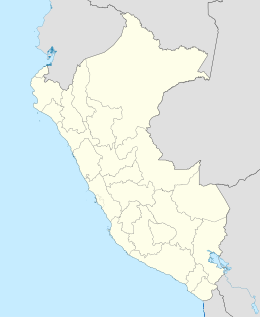|
Chincha Islands
The Chincha Islands (Spanish: Islas Chincha) are a group of three small islands 21 kilometres (13 mi; 11 nmi) off the southwest coast of Peru, to which they belong, near the town of Pisco. Since pre-Incan times they were of interest for their extensive guano deposits, but the supplies were mostly exhausted by 1874. Geography  The largest of the islands, Isla Chincha Norte (English:North Chincha Island), is 1.3 kilometres (0.8 mi) long and up to 1.0 kilometre (0.6 mi) wide, and rises to a height of 34 metres (112 ft). Isla Chincha Centro (English:Center Chincha Island) is almost the same size as its neighbour to the north, while Isla Chincha Sur (English:South Chincha Island) is half the size of its neighbours. The islands are mostly granite, and bordered with cliffs on all sides, upon which great numbers of seabirds nest.[1] HistoryThe Chincha Islands were once the residence of the Chincha people, but only a few remains are to be found today. Peru began the export of guano in 1840. Spain, which did not recognize Peru's independence until 1879 and desired the guano profits, occupied the islands in April 1864, setting off the Chincha Islands War (1864–1866). In literatureThe Chincha Islands were featured in an 1854 book by the American author George Washington Peck titled Melbourne, and the Chincha Islands: With Sketches of Lima, and a Voyage Round the World. The book chronicled Peck's time spent in Melbourne, Australia, as well as the Chincha Islands.[2] Chapter L of Mark Twain's novel Roughing It also mentions the Chincha Islands. See alsoReferences
External links
|
||||||||||||||||||||||||

